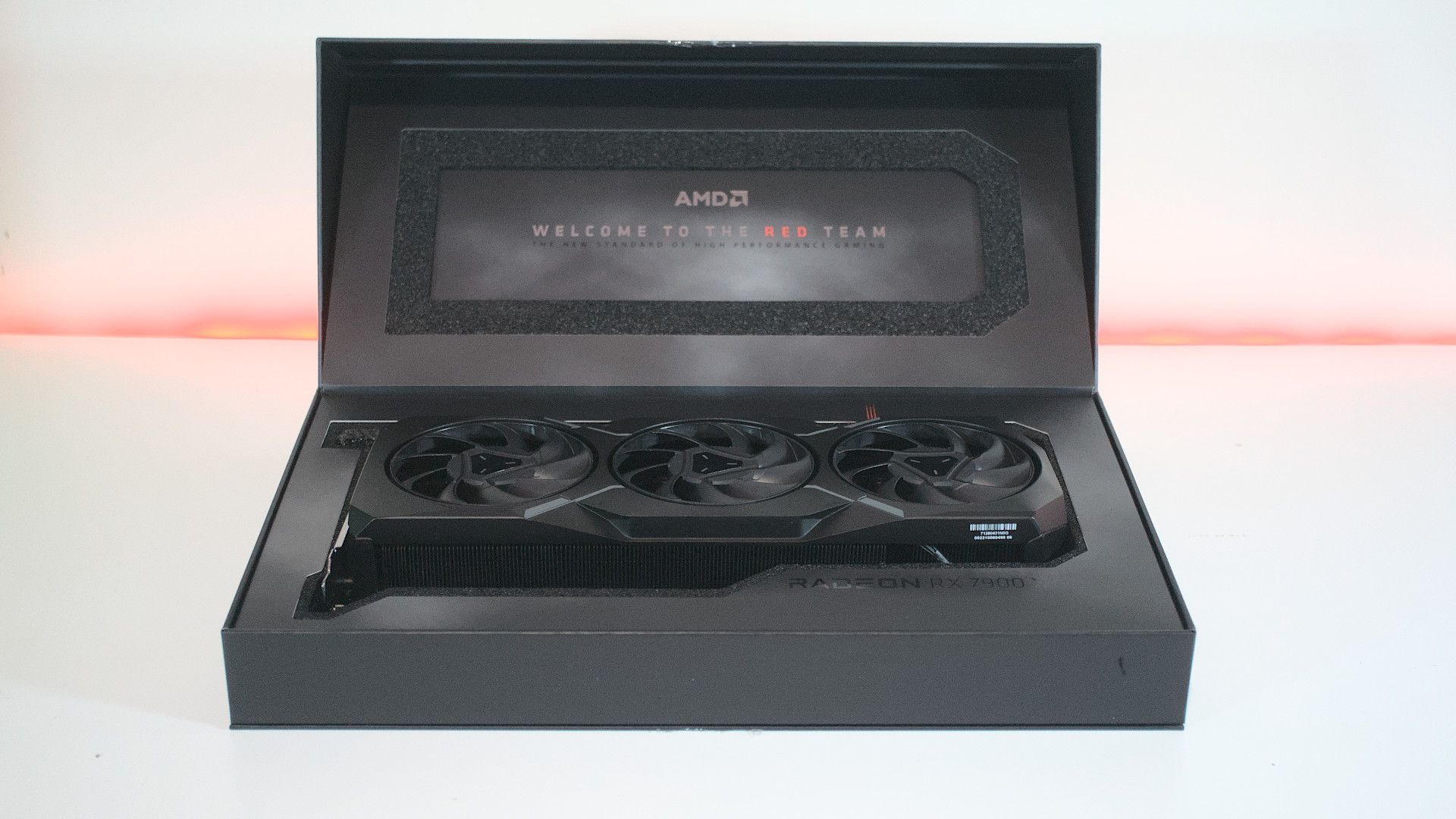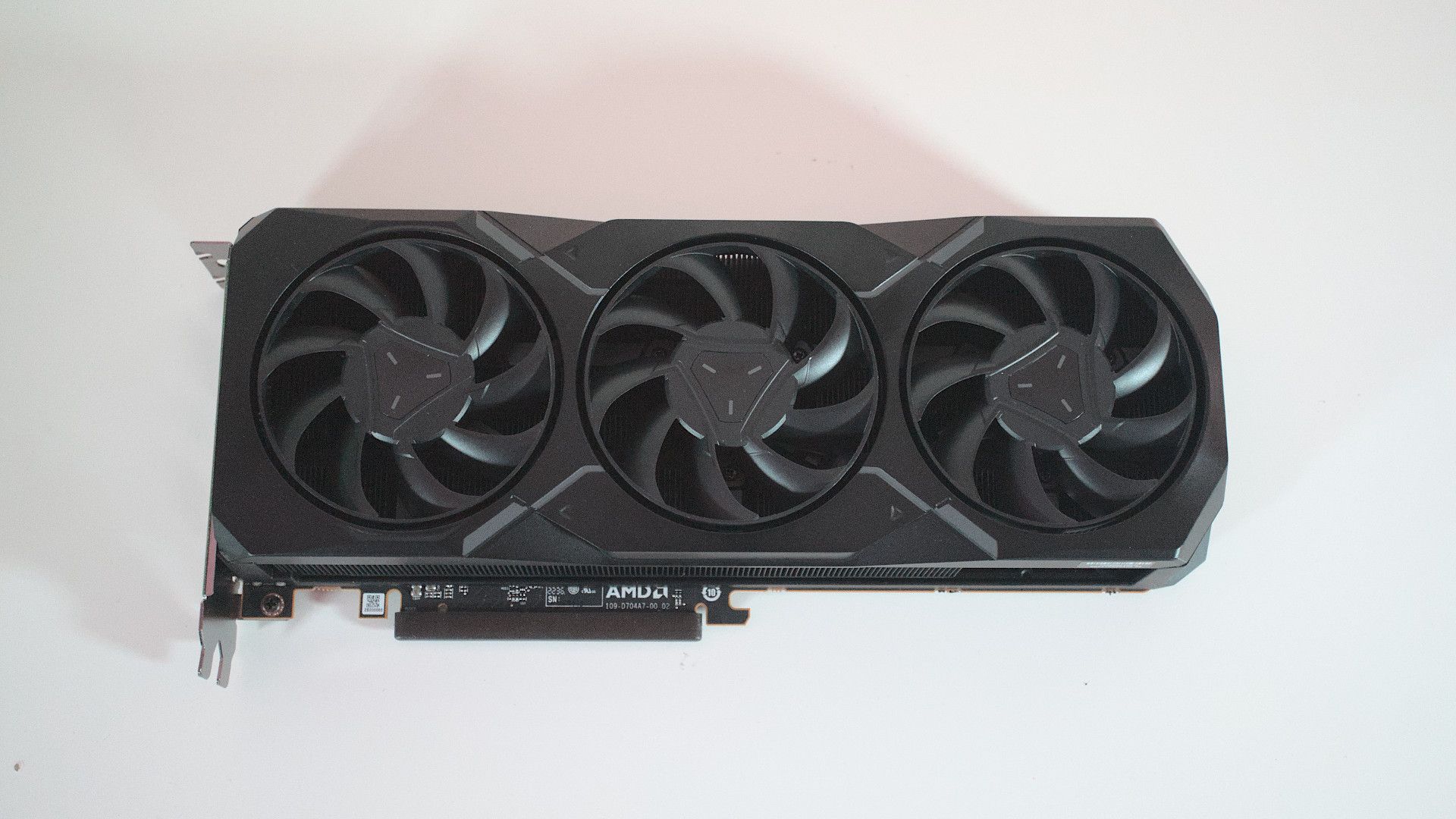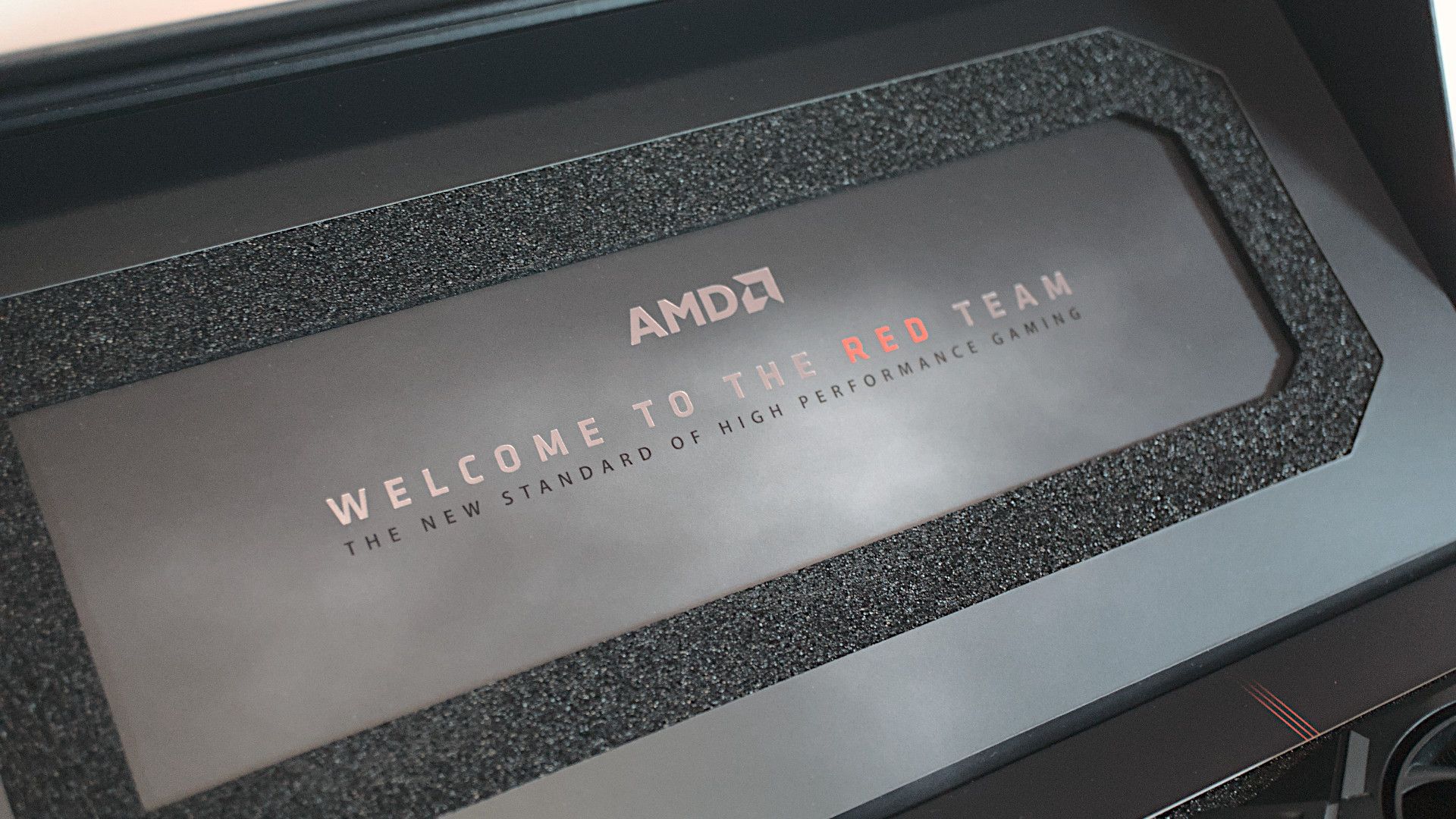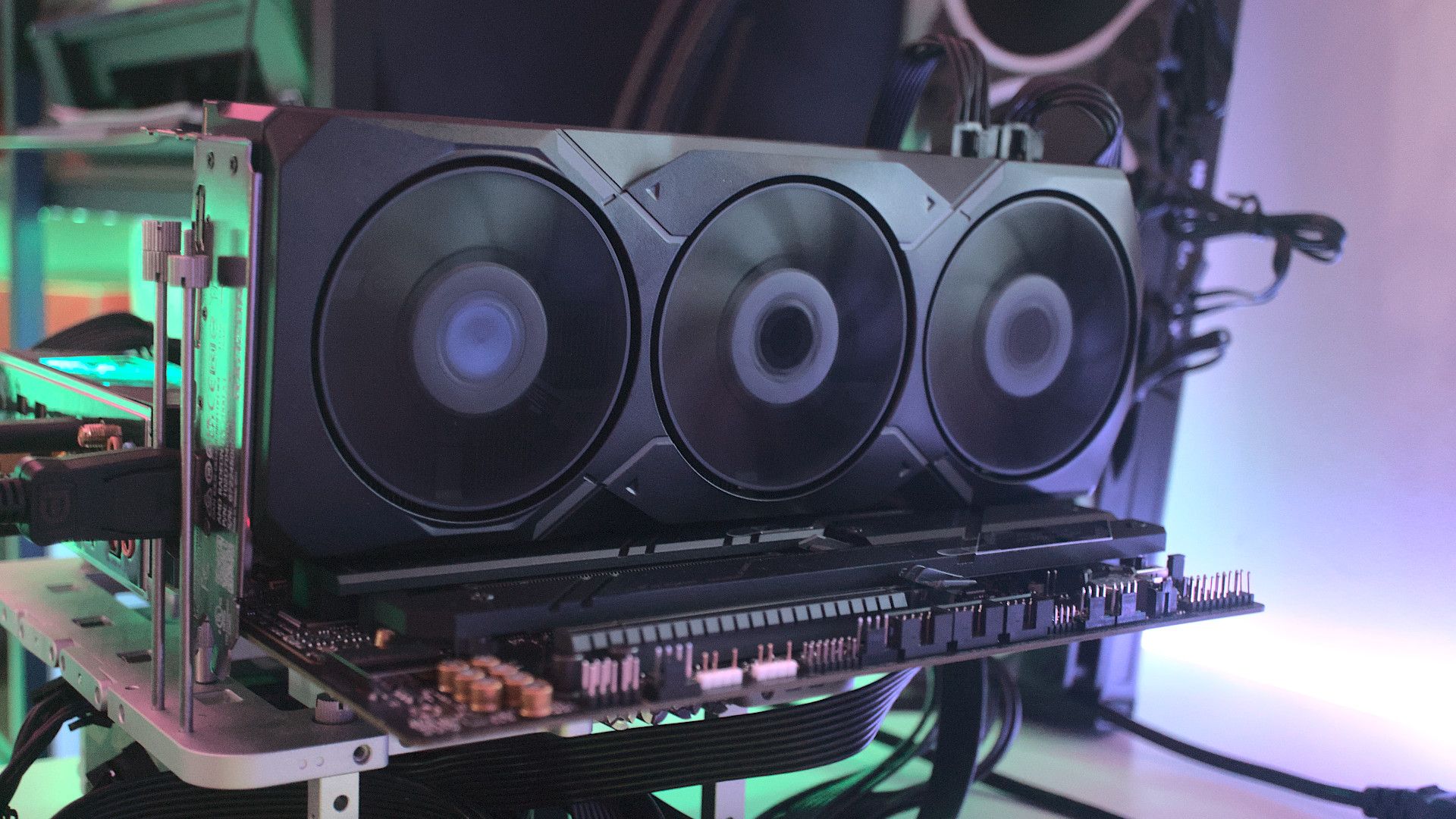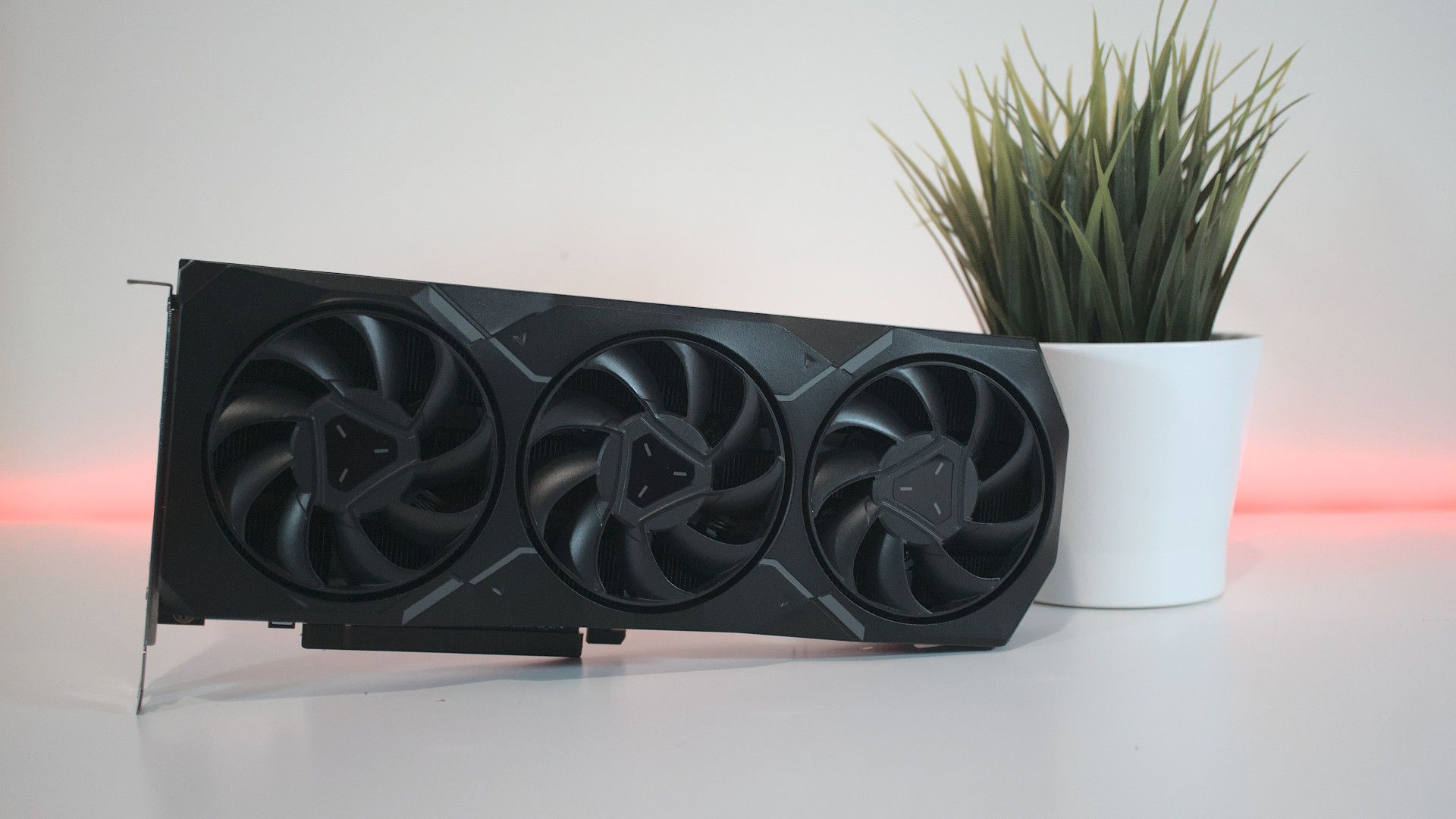AMD launched two graphics cards today, the AMD Radeon RX 7900 XTX and AMD Radeon RX 7900 XT. In this review, we’re going to be looking at the latter. Replacing the outgoing RX 6900 series, these new graphics cards are built on the company’s RDNA 3 architecture. As a dig at NVIDIA’s current pricing fiasco, AMD’s new flagship 7900 GPUs are designed to offer solid 4K gaming experiences for less than $1,000.
The AMD Radeon RX 7900 XTX will likely steal much of the thunder for this GPU launch, but the RX 7900 XT is worth considering too. It’s essentially the same GPU with slightly weaker specs. We’ve found it to be still great for 2K (1440p) and 4K (2160p) gaming, taking on the vastly more expensive NVIDIA GeForce RTX 4080. It’s easily one of the best graphics cards launched this year.
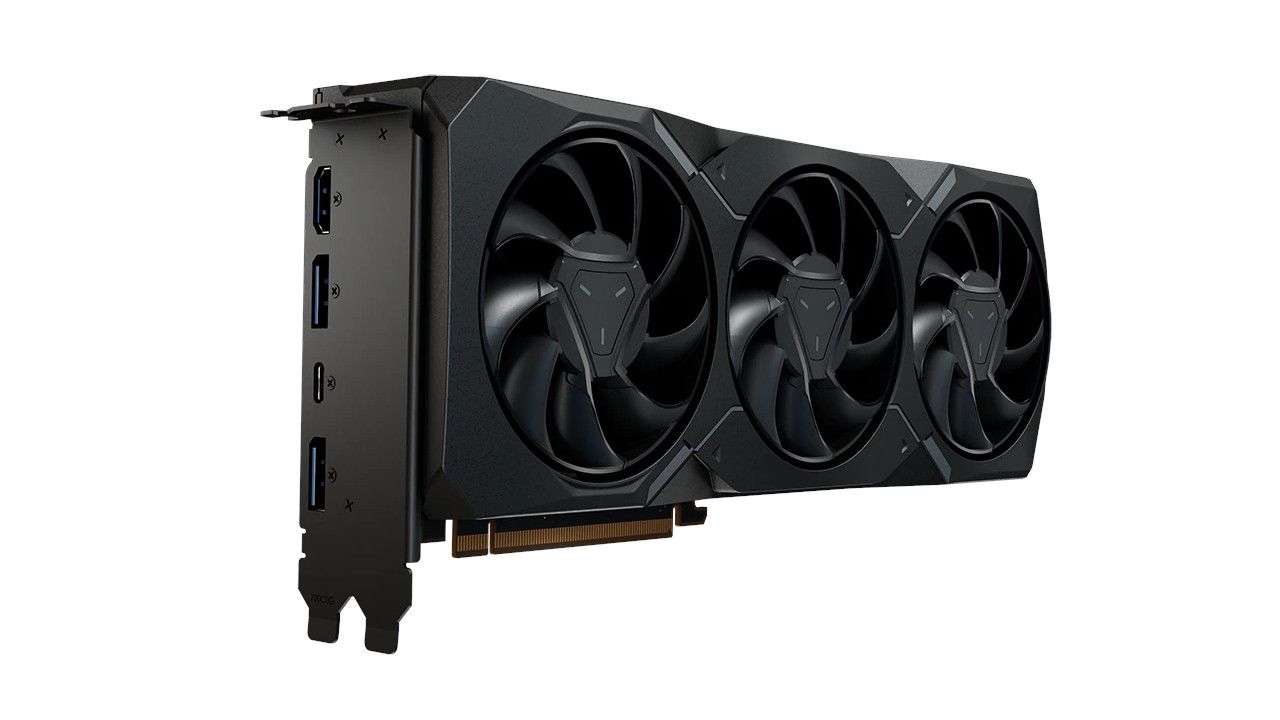
Source: AMD
AMD Radeon RX 7900 XT
Part of AMD’s RX 7900 launch, the AMD Radeon RX 7900 XT is one of the best GPUs released by AMD this year. It’s well suited for 2K (1440p) and 4K (2160p) gaming with ample performance at a more reasonable price.
|
Pros |
Cons |
|---|---|
|
Great value proposition against NVIDIA |
Still relative expensive |
|
Solid 1440p and 4K gaming performance |
Not quite a 2 slot GPU |
|
Excellent reference card design |
|
|
Good thermals and cooling |
AMD Radeon RX 7900 XT: Pricing and availability
- The AMD Radeon RX 7900 XT is available for $899.
The price of graphics cards (and other PC components) is considerably more expensive than before the global lockdowns, silicon shortage, and cryptocurrency mining craze. The launch of the latest RTX 40 series cards from NVIDIA did little to return to the norm, especially with both the RTX 4080 and RTX 4090 costing vastly more than $1,000.
Enter AMD with the new Radeon RX 7900 XT. It costs just $899, which is still a considerable sum of money for a GPU and manages to perform as well (if not better) than the $1,199 NVIDIA GeForce RTX 4080. AMD launched the Radeon RX 7900 XT alongside the RX 7900 XTX on December 12, 2022, costing $899 and $999, respectively.
AIB partners such as ASUS, MSI, XFX, and ZOTAC will each price their aftermarket versions accordingly, offering better performance than the reference cards we have in for review.
RDNA 3 architecture
- Switch to chiplets, the first for gaming GPUs.
- Introduction of 2nd Gen AMD Infinity Cache.
We’ve gone into some detail about AMD’s new RDNA 3 architecture in our AMD Radeon RX 7900 XTX review, so I’d recommend reading through that if you’d like to learn more about what’s new with this generation of cards. In short, AMD switched to a chiplet design, the first we’ve seen with a graphics card. This allows the company to extract more performance per watt.
There are some other highlights too, such as 2nd Gen AMD Infinity Cache with up to 3,494GB/s of bandwidth using Smart Access Memory (with an AMD Ryzen CPU), improved ray tracing cores, hardware-accelerated AV1 support, and a new Radiance Display Engine. Compared to the AMD Radeon RX 7900 XTX, this GPU is largely the same deal with slightly less memory, slower clock speeds, and fewer cores.
The goal with RDNA 3 was to produce some excellent GPUs for less than $1,000. The Radeon RX 7900 XTX only just achieves this, but the Radeon RX 7900 XT is a little more affordable, coming in at just $899. This is a little more in line with what we’d expect to pay for a flagship GPU before prices exploded through the pandemic and crypto mining craze.
Design & features
The AMD Radeon RX 7900 XT is a very subtle graphics card. There’s no fancy styling or aggressive color accents. The design is clean with an all-black design and some red touches are thrown in. The architecture has switched things up from the 6000 series of AMD Radeon cards, but the cooling solution used here to keep the RX 7900 XT within a desired operating temperature range isn’t anything groundbreaking.
AMD managed to extract more performance per watt, allowing the company to effectively utilize the same tri-fan cooling setup. It’s largely overkill for what’s present on this card and decent in-game temperatures are to be expected. There are three 92mm fans that fire down fair at the full-size PCB. It weighs a fair amount, thanks to the metal shroud and backplate.
Whilst this isn’t anywhere close to the NVIDIA GeForce RTX 4080 in terms of size, AMD notes this is a 2.5-slot GPU, which means you will need to sacrifice three PCI slots. I do hope manufacturers cease using “2.x” slots for marketing. If it’s a 2.5-slot card, it’s a 3-slot card. You won’t be able to connect anything to the slot below this GPU and that’s a reasonable sacrifice for such a powerful GPU.
Powering the graphics card are two 8-pin PCIe connectors. There’s no 12-pin special port here, which is to be expected since this card only has a rated power draw of 315W.
The rear of the GPU is where the backplate resides. It’s similar in looks to the XTX version of the RX 7900, but there are some small changes that allow you to tell the cards apart. The cooler is massive and the fin array positioning has AMD relying on exhausting air out the sides of the GPU, as opposed to the top and PCI bracket, the latter having no vents.
Just like the AMD Radeon RX 7900 XTX, the 7900 XT has a single HDMI 2.1a port, two Display 2.1 ports, and a USB-C port (with DP 2.1) for monitors that support video signals over USB. And that’s the AMD Radeon RX 7900 XT. It’s a sleeper GPU that will look right at home inside most PC builds.
Gaming performance
- Performance is solid in 1440p and 4K game tests.
- Undercuts and almost matches the NVIDIA GeForce RTX 4080.
Just like our AMD Radeon RX 7900 XT review, we used an all-AMD (as well as an Intel build) test bench to see just how well these cards perform. Here are the specs of our test rig:
- AMD Ryzen 9 7950X CPU.
- ASUS ROG Strix X670E-E Gaming WiFi motherboard.
- 32GB of Kingston Fury Renegade DDR5-7200 RAM.
- Sabrent PCIe 4.0 M.2 SSD.
The AMD Radeon RX 7900 XT was tested at resolutions of UHD (2160p) and QHD (1440p). All games were loaded on and from the same Sabrent PCIe 4.0 SSD for maximum performance. It’s clear AMD’s Smart Access Memory does have an impact on performance when compared to using an AMD GPU with an Intel motherboard and processor, though most people shouldn’t really notice a difference unless you desire the absolute best frame rates.
A kilowatt measurement device was used alongside software to monitor sensors and other metrics through testing. All synchronization technologies are disabled during our tests, including V-Sync, AMD FreeSync- and NVIDIA G-Sync, though we may note how much of an impact these may have while enabled.
Let’s take a look at how the AMD Radeon RX 7900 XTX and the Radeon RX 7900 XT compare against one another:
|
AMD Radeon RX 7900 XTX |
AMD Radeon RX 7900 XT |
|
|---|---|---|
|
Architecture |
RDNA 3 |
RDNA 3 |
|
Process |
5nm, 6nm |
5nm, 6nm |
|
Transistors |
57.7 billion |
57.7 billion |
|
Compute Units |
96 |
84 |
|
Ray Accelerators |
96 |
84 |
|
AI Accelerators |
192 |
168 |
|
Stream Processors |
6,144 |
5,376 |
|
Base Clock Speed |
2,300 MHz |
2,000 MHz |
|
Boost Clock Speed |
2,500 MHz |
2,400 MHz |
|
Memory Capacity |
24 GB GDDR6 |
20 GB GDDR6 |
|
Memory Bus |
384-bit |
320-bit |
|
AMD Infinity Cache |
96 MB |
80 MB |
|
Memory Bandwidth (w/ Infinity Cache) |
3,500 GB/s |
2,900 GB/s |
|
Power Draw |
355W |
315W |
|
Price |
$999 |
$899 |
Synthetic benchmark tests aren’t too relevant for the average gamer as you’ll likely never run them on your own system. What these results allow us to do is compare hard figures against the competition.
|
Benchmark |
AMD Radeon RX 7900 XTX |
|---|---|
|
Fire Strike Ultra |
16,233 |
|
Time Spy (DX12) |
24,285 |
|
Time Spy Extreme (DX12) |
12,589 |
We expected the AMD Radeon RX 7900 XT to come slightly behind the Radeon RX 7900 XTX with slower memory, speeds, and fewer cores active. What we’ve seen with our results is approximately a 15% reduction across our suite of synthetic tests. Comparing the RX 7900 XT against the NVIDIA GeForce RTX 4080 and it’s incredibly close. NVIDIA’s GPU scores just 17,000 (or thereabouts) in the 4K Fire Strike Ultra test. It’s a similar story to Time Spy.
Gaming performance is solid at 1440p and 4K resolutions using the AMD Radeon RX 7900 XT. It’s not quite up to par with the RTX 4080, especially when ray tracing is activated, but you’ll easily be able to crank settings up without encountering much in the form of stuttering.
|
Game |
AMD Radeon RX 7900 XT |
|---|---|
|
Cyberpunk 2077 |
|
|
DOOM Eternal |
|
|
Fay Cry 6 |
|
|
Metro Exodus |
|
|
Red Dead Redemption 2 |
|
Powering through these tests, the card draw on average 309W from the PCIe slot and cables. The fans ramped up to about 1,750 RPM and we measured noise emitting from the card at 42 dBA. This is in line with expectations at this level and shouldn’t pose a problem when installed inside a chassis with ample sound dampening. Temperatures were excellent, thanks to the three-fan setup.
We saw the card report a temperature of just 58C after some time in games with a hotspot reading of 78C. There’s plenty of room here to tweak settings and extract additional performance out of the card.
Should you buy the AMD Radeon RX 7900 XT
You should buy the AMD Radeon RX 7900 XT if:
- You want a better deal than what’s currently available on the market.
- You don’t mind spending $899 on one of AMD’s flagship GPUs.
- You don’t require the performance offered by the NVIDIA GeForce RTX 4090.
- You prefer to use AMD’s software and have an existing AMD processor for Smart Access Memory.
You shouldn’t buy the AMD Radeon RX 7900 XT if:
- You want the absolute best graphics card available, the NVIDIA GeForce RTX 4090.
- You can afford the AMD Radeon RX 7900 XTX.
- You don’t want to spend $899 on a graphics card.
Yes, you should buy the AMD Radeon RX 7900 XT. It’s a fantastic GPU that undercuts the NVIDIA GeForce RTX 4080 by a full $300, yet pretty much matches the GPU in performance. AMD’s RDNA 3 architecture is a considerable step forward for the company, unlocking better performance-per-watt and the results showcase just how far this generation has bridged the gap between teams green and red.
But if you can stretch an additional $100, the AMD Radeon RX 7900 XTX is the better deal overall, offering the best RDNA 3 performance you can buy right now.

Source: AMD
AMD Radeon RX 7900 XT
Part of AMD’s RX 7900 launch, the AMD Radeon RX 7900 XT is one of the best GPUs released by AMD this year. It’s well suited for 2K (1440p) and 4K (2160p) gaming with ample performance at a more reasonable price.

